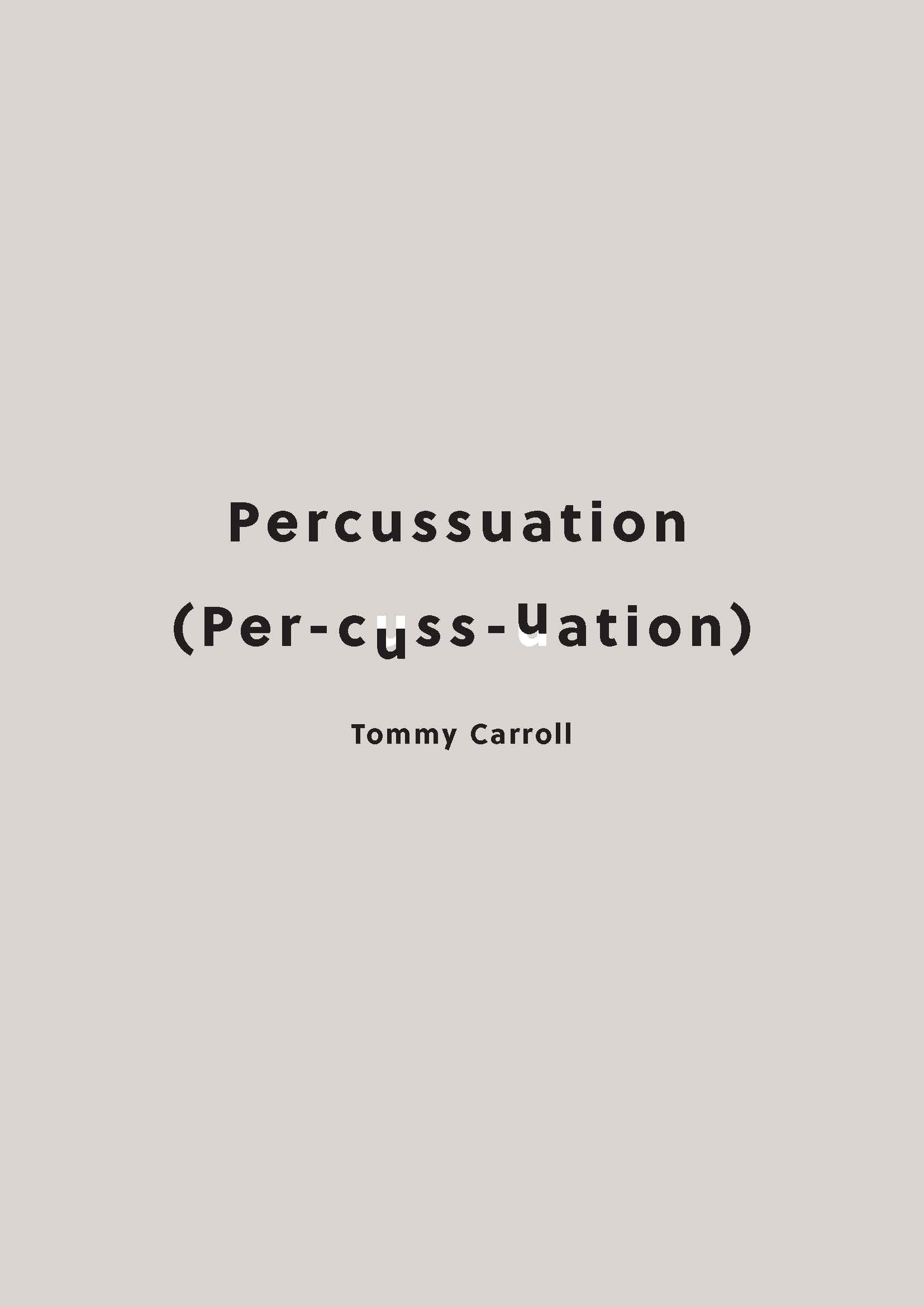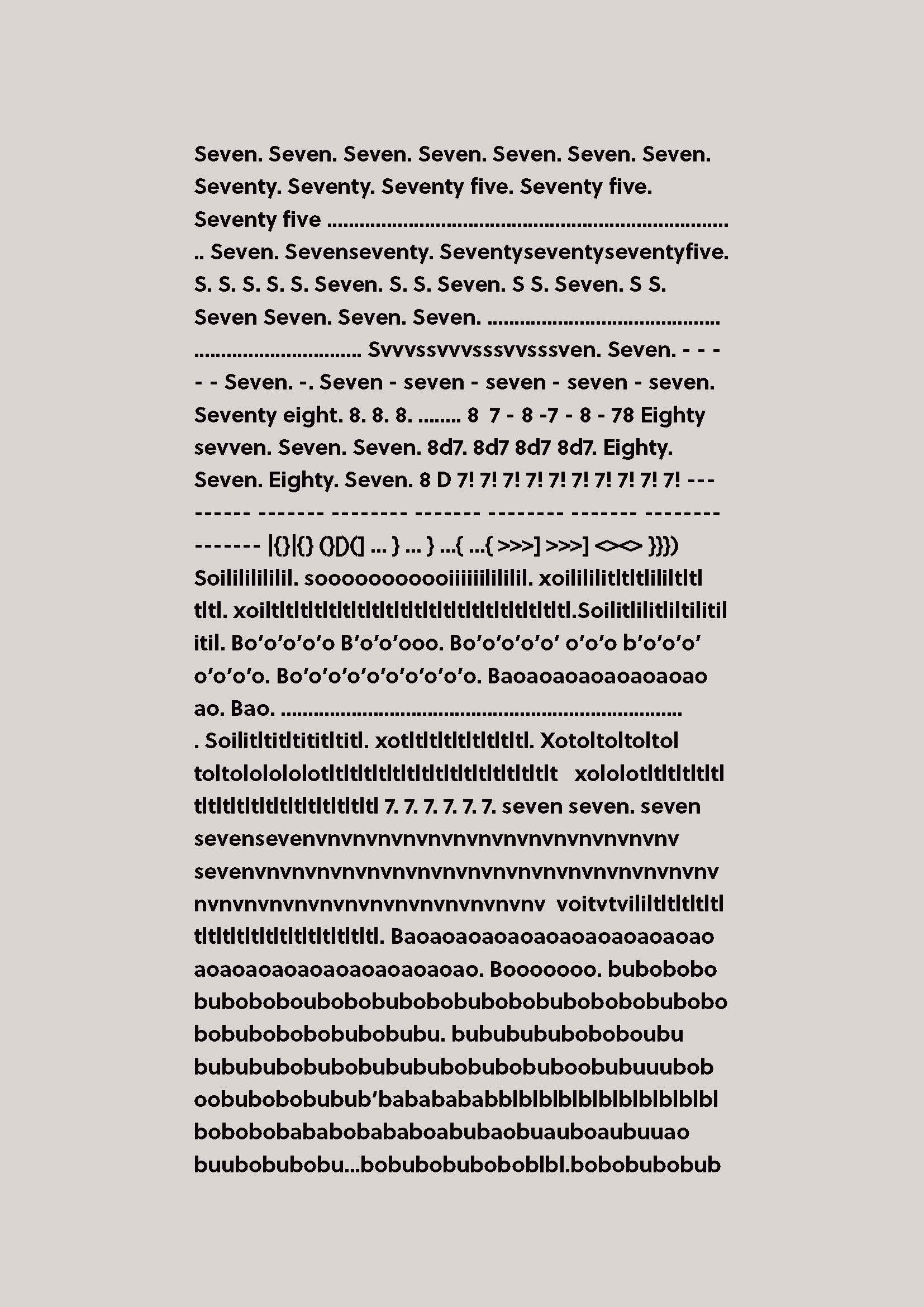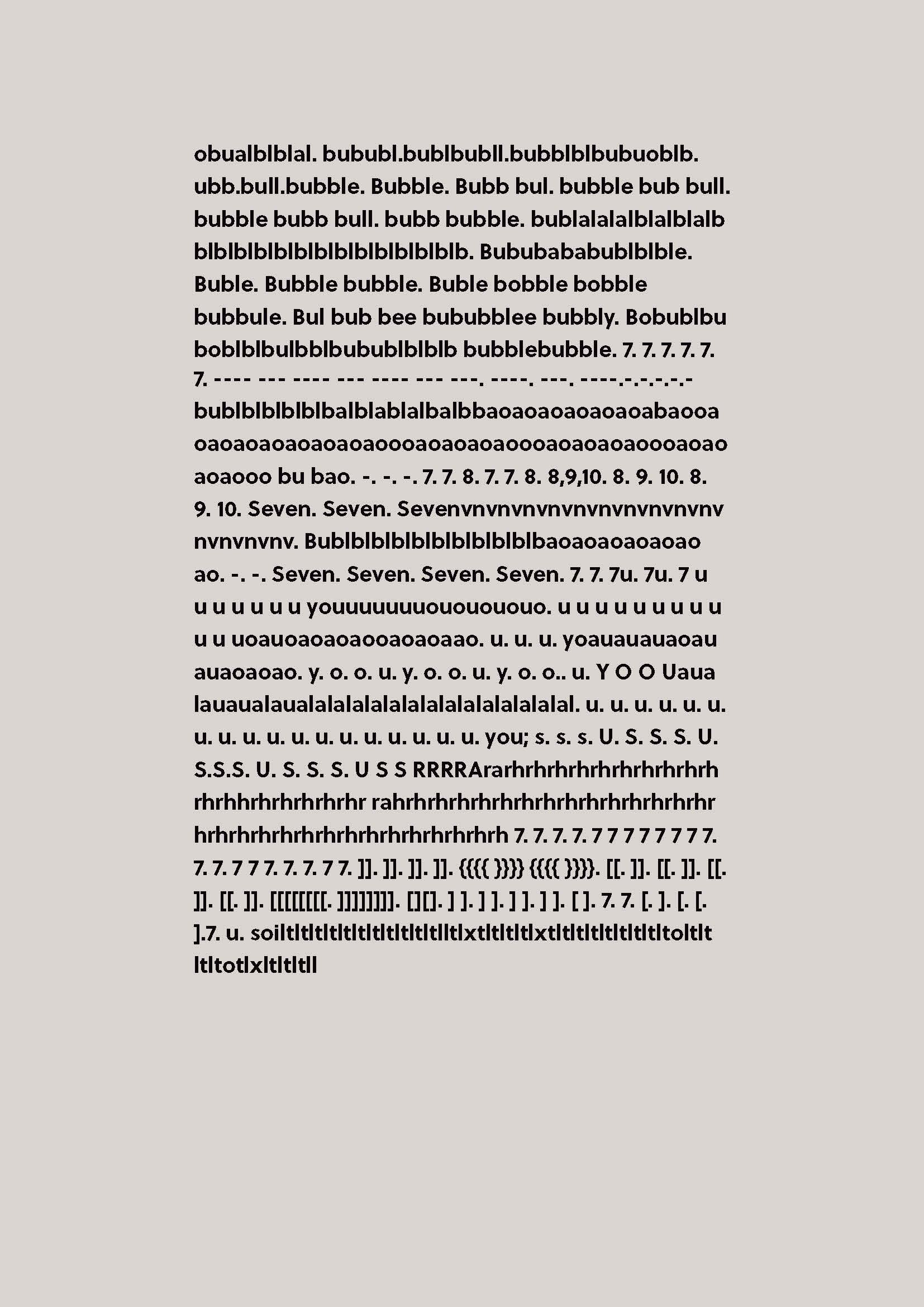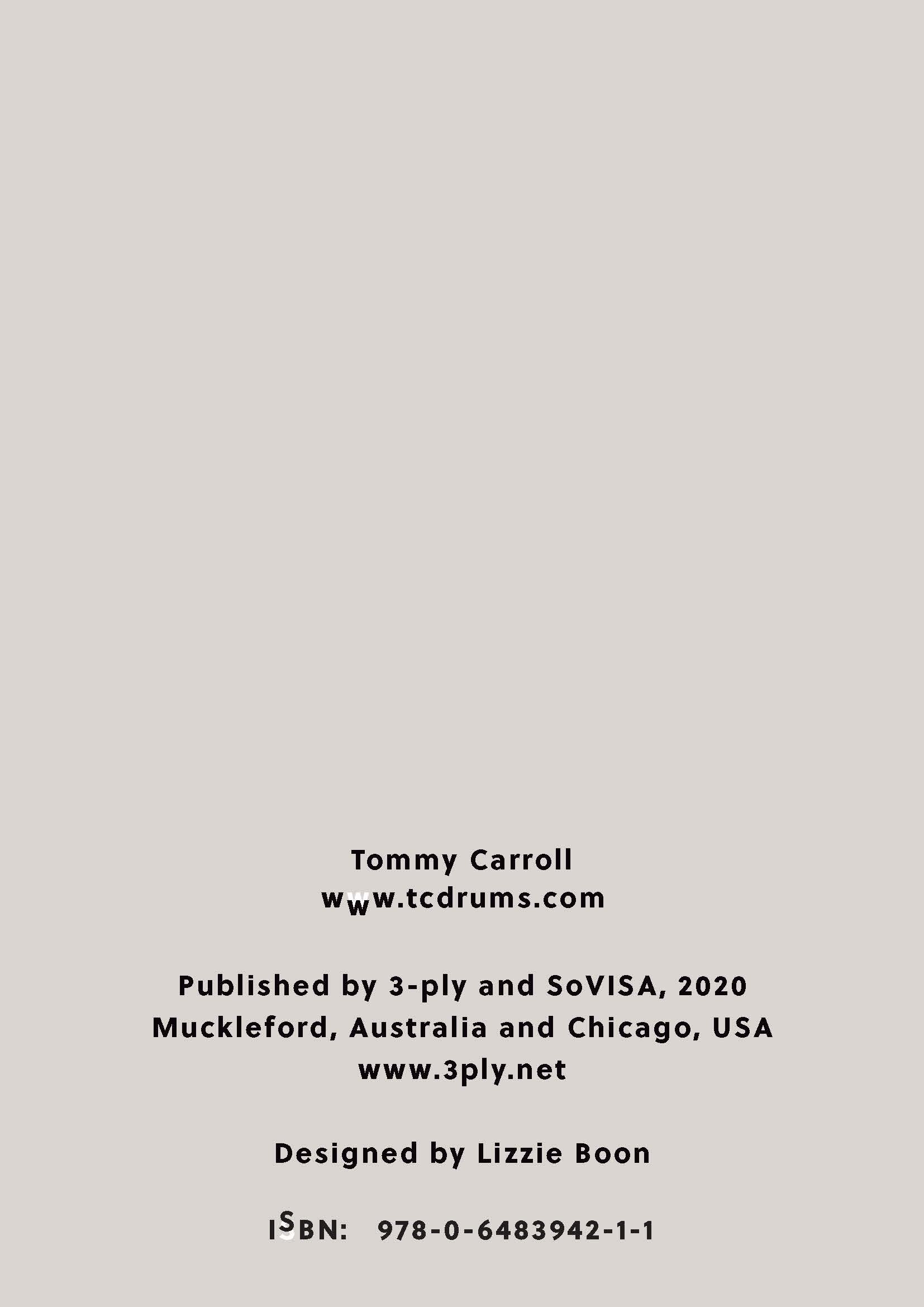15
Tommy Carroll
Per-cuss-uation
210 x 297 mm
Digital pdf, open edition
Design by Lizzie Boon
Published by 3-ply and SoVISA, 2020
ISBN 978-0-6483942-1-1
Digital pdf distributed free as 3-ply Covid microcommission
Limited offset edition forthcoming in 2021
Per-cuss-uation is a digital publication designed to be read by a screenreader, authored by blind Chicago-based drummer / composer / producer Tommy Carroll, who seeks to create the soundtrack to a more inclusive world. A lifetime of developing creative skills to circumvent physical barriers has lead Tommy to draw on a wide array of influences when playing and composing music. In his own music, Tommy builds emotive grooves and weaves them together with harmonic and sonic blueprints that allow performers to bring their own voices to the table. Tommy’s latest album release, Dances for Different Bodies, Vol. I, is a tribute to disability culture that uses rhythms of modern dance music as a template for group improvisation. Tommy’s band Calculated Discomfort has performed at major venues in Chicago including the Art Institute of Chicago, the Steppenwolf Theater, Sleeping Village, and Elastic Arts. He also has performed work as a member of SoVISA at Experimental Sound Studio’s Oscillations Series, the Museum of Contemporary Art, and Agitator Gallery. Tommy’s 2017 album Not Amazing confronts the mainstream's tendency to view people with disabilities as objects of motivation or pity. He has also released an album of free jazz (Calculated Discomfort, 2018) and an EP of pop songs (Listening, 2019). Described by the Chicago Reader as a workhorse drummer, he has performed nationally with rock bands, jazz combos, rappers, and singers from bluegrass to soul.
Per-cuss-uation is co-published by 3-ply and the Society of Visually Imapired Sound Artists (SoVISA).
“I have found it fascinating when people have told me that I should incorporate the sound of my screenreader in my music. The screenreader, which allows me to access everything from email to Facebook to audio editing software, is with me every day. It might as well be a voice in my head because I’m always working on earbuds—often requiring a physical nudge to return to the outside world. I’ve been operating this way since I was about 12 years old. I hear the sounds of my screenreader so frequently that I personally struggle to find anything interesting about the speech pumping into my brain. However, I can grasp the fact that the sound of a robot narrating the contents of a computer or phone screen at breakneck speed could be disorienting for sighted folks not used to relying on machines for such tasks. Screenreading technology has unlocked many doors to participation for us blind folks, but automatic access is far from a given. I have held down corporate jobs, currently manage my own business affairs as a freelance musician and artist, and have gone through many years of school, all independently, but there are some days that I spend up to three hours just trying to input a simple payment or submit a simple form because many companies are not building their digital products with screenreader accessibility in mind. And so, as with much meaningful art, pain is the inspiration too for this piece of aural madness. In what you are about to experience, I have tried to use my abilities as a drummer, composer and screenreader user to arrange the sounds of malfunction I frequently experience into a pseudo-musical form. You will (hopefully) experience rhythms and dare I say a bit of structure (or at least a collection of motifs), but most definitely you will hear the sound of a screenreader struggling to keep up with something designed to trick it. I personally enjoy listening to this piece using JAWS for Windows, my screenreader of choice, but it will work equally well on any free built-in screenreader. I should probably include a trigger warning because visually impaired users will probably find this experience horrifyingly similar to moments of their daily lives. If you’re not a screenreader user and you’re on an iPhone, turn on voiceover in accessibility settings, and let it rip.”
— Tommy Carroll, 2020
Washed in green light, percussionist Tommy Carroll leans close over his drumkit, head lowered and turned to the side, mid-performance, as the forearm of an unidentified bandmate strikes a xylosynth washed in red light.
Photo by Jax Ovalle.





